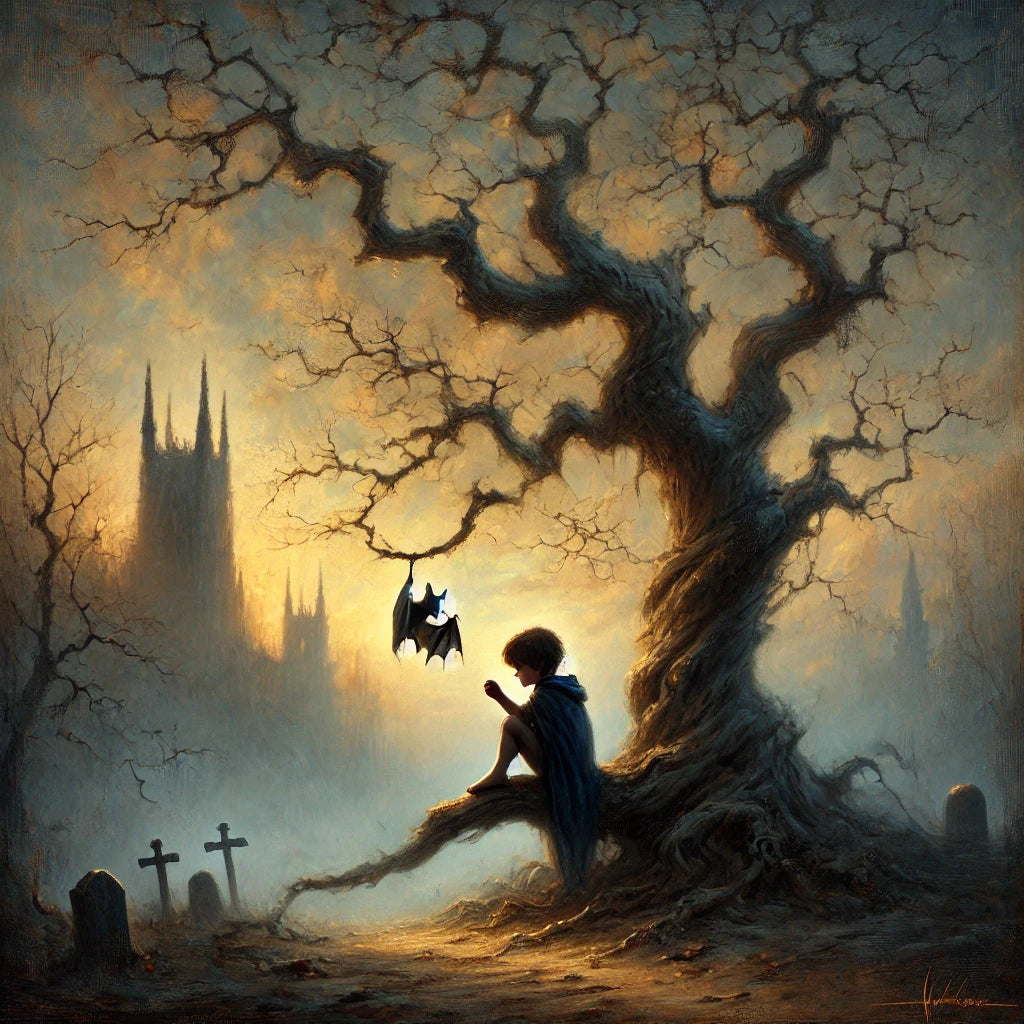The Loneliness of the Eternal Child - Part 1
The Loneliness of the Eternal Child - Part 1
Realizm and Ekspresjonizm
Wampiry i nietoperze and Fantastyka i science fiction
Lead time
Lead time
⏳ Delivery time
The order processing time depends on: the production technique, the drying time of the paints, the size of the image and any hand-finishing and protection.
🖼️ Art print on canvas
-
High quality canvas printing :
- Canvas - synthetic canvas 260 g
- Natural Canvas - 260 g cotton canvas
- Stretching the canvas onto the frame
- Quality control and packaging
Total completion time:
🎨 Oil Giclée Reproduction (print + hand-finished)
-
Giclée print on canvas:
- Canvas premium - natural cotton canvas 360 g
- Pigment print drying
- Hand finishing: texturing and oil painting
- Paint drying (depending on layer thickness, medium type and format)
- Stretching the canvas onto the frame
- Quality control and packaging
Total completion time: –
🚚 Ready-made paintings – shipped within 24 hours
Our gallery has a special category called "Ready-Made Paintings" - these are works available immediately, already stretched on a frame or in a ready-made frame.
- They are 100% ready for immediate shipment
- Safe packaging in a reinforced cardboard box
Shipping takes place within: from the date of booking the order.
Image format: Reprodukcja Oil Giclée
Need a different size? Contact us.
Couldn't load pickup availability
1. Title
"The Loneliness of the Eternal Child"
2. Description of the image
In this incredibly delicate yet atmospheric scene, we see a young vampire—a child lost in time—sitting beneath a twisted, ancient tree with roots resembling hands grasping the earth. A bat rests on his lap, dangling from a branch, touched by tiny, tender, defenselessly gentle fingers. This gesture—between friendship and loneliness—becomes the heart of the entire composition.
In the background, through the dispersed fog, the towers of Gothic buildings loom—distant, like memories of a world this child no longer knows. The entire scene is silent, as if suspended between dream and memory. It's a moment of stillness—not of pain, but of nostalgia.
3. Technology
The painting was created in oil on raw canvas, using a dry brush to detail the child, the bat, and the texture of the tree. The sky and background are painted with broad, soft strokes, creating a gentle, misty world—as if painted with breath. Light permeates the entire piece, unobtrusive, yet quietly telling a story.
4. Style
The style of the work balances between romantic realism and illustrative symbolism. In the spirit of 19th-century fairy-tale painting, the painting bears marks of melancholy and poetic tranquility. There is no screaming here – only silence.
5. Colors
The color palette combines the warm gold of sunset light with the cool blues of fog. The colors don't dominate—they coexist. They suggest a dream, a memory, something that lingers beyond the moment but refuses to fade away.
6. Invoice
The texture of the painting is subtle – in the delicate lines of the tree trunk, the soft fur of the bat, and the folds of the child's clothing. The sky and background are blurred, like breath on a windowpane – everything here speaks of transience.
7. Inspiration
-
Odilon Redon – for the softness of light and the sensitivity of color.
-
John Everett Millais – for the emotional truth of a child's figure.
-
Neil Gaiman (dark fairy tale aesthetic) – for an atmosphere of delicate but profound loneliness.
8. Message and interpretation
It's a picture of childhood locked in eternity—unsullied by horror, yet bearing its shadow. There's no horror here—only the echo of loss, the need for touch, friendship, and sleep. This isn't a vampire—this is a child who will never grow up, though he will live forever.
9. Originality
"The Loneliness of the Eternal Child" is a painting that doesn't shout, but rather whispers of longing and silence. Its value lies in its subtlety—in its gesture, light, and emptiness. It is a work that captivates with its heart, not its drama.
Share


